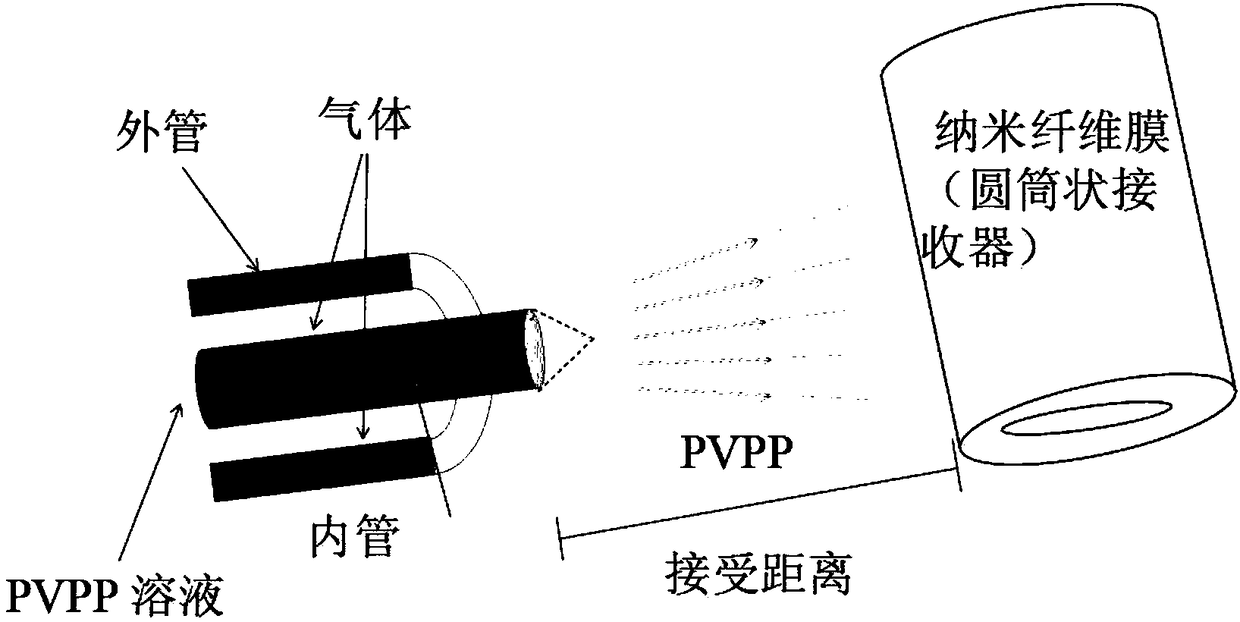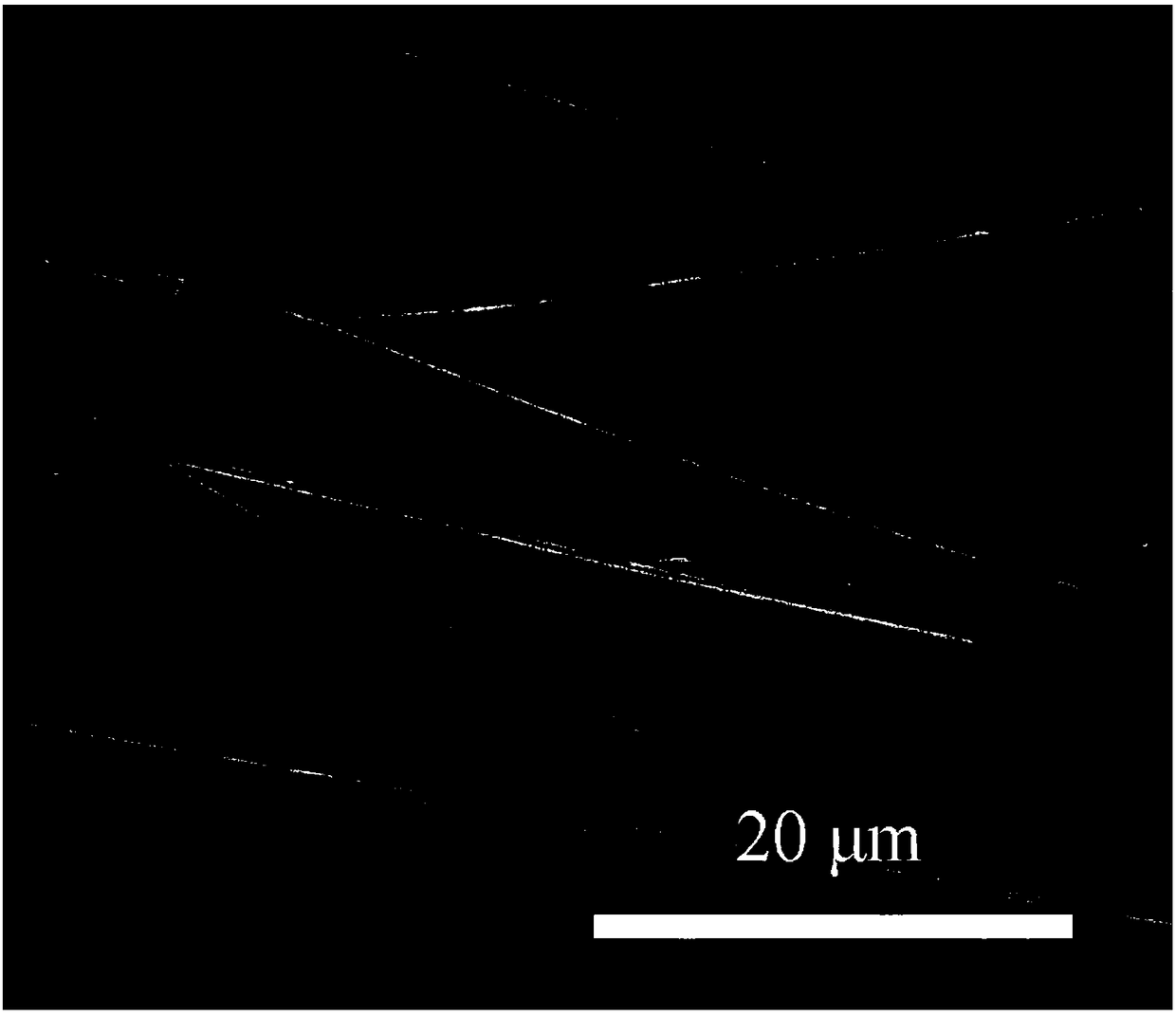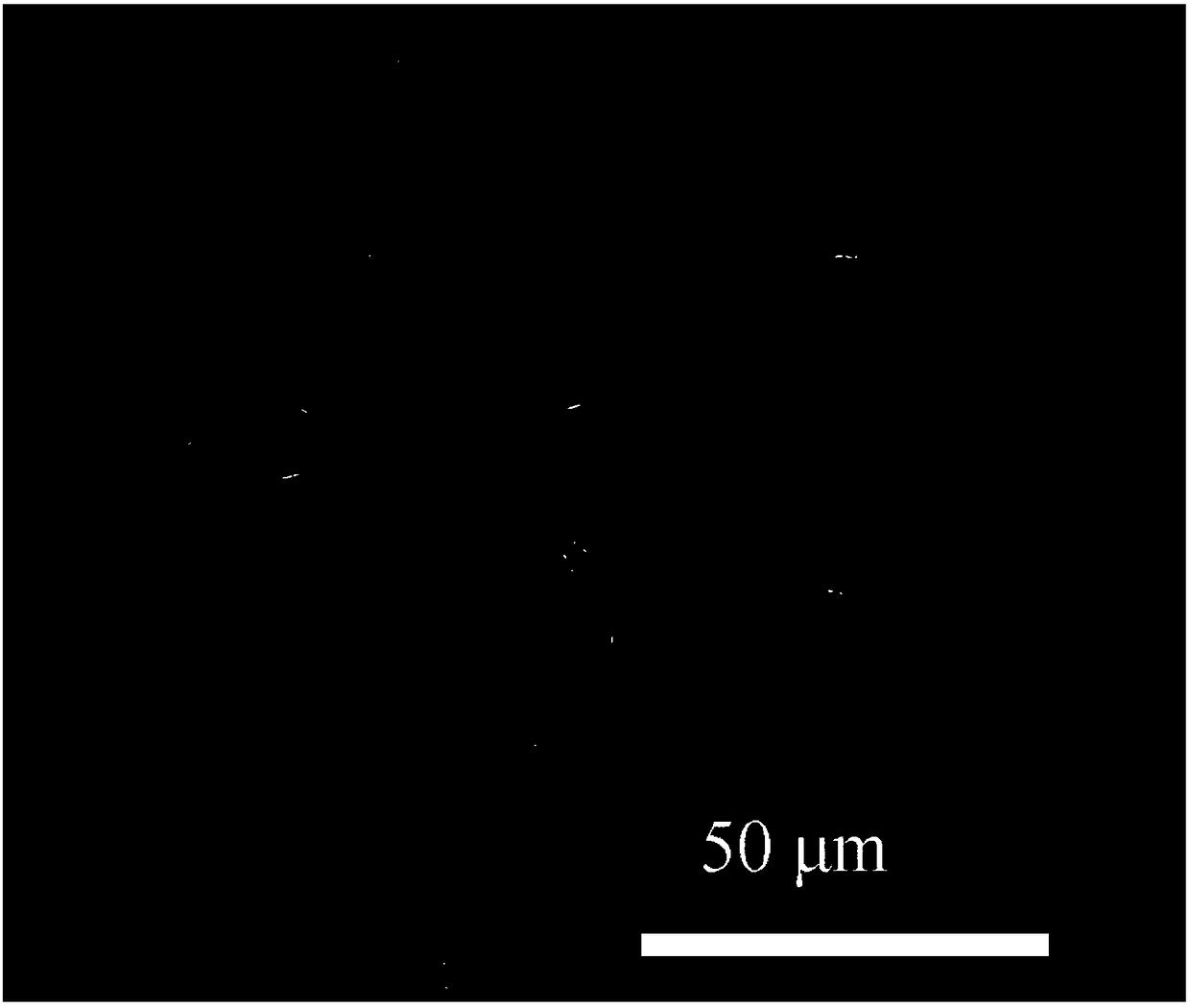Preparation method of hydrophilic phenolphthalein polyethersulfone composite nanofiber ultrafiltration membrane
A technology of composite nanofibers and nanofiber membranes, applied in ultrafiltration, chemical instruments and methods, membranes, etc., can solve the problems that the hydrophilic modification of PES-C nanofiber composite ultrafiltration membranes is rarely mentioned, etc. Wide range of applications, improved hydrophobicity, and strong anti-pollution ability
- Summary
- Abstract
- Description
- Claims
- Application Information
AI Technical Summary
Problems solved by technology
Method used
Image
Examples
Embodiment 1
[0036] (1) Dissolve phenolphthalein polyethersulfone with an intrinsic viscosity of 1.0g / dL in DMF, prepare a 15wt% spinning solution, let it stand for defoaming, squeeze the spinning solution out of the spinning pinhole through a metering pump, and The nanofiber film is formed by air stretching and collection. The relevant process parameters are: spinneret diameter 0.8mm, propulsion speed 5ml / h per hole, spinning air pressure 0.08MPa, receiving distance 15cm, spinning time 2h, and the atmosphere used for spinning is nitrogen gas; the obtained nanofiber membrane was dried in vacuum at 80° C. for 10 h to obtain a PES-C nanofiber membrane.
[0037] (2) Prepare a 5wt% solution of PVPK30, add potassium persulfate as an initiator with a mass ratio of 2:1 to PVPK30, raise the temperature at 80°C for 5 hours, and obtain a PVPP solution.
[0038](3) Spray the PVPP solution in step (2) onto the surface of the PES-C nanofiber membrane in step (1) through a solution spraying device, ther...
Embodiment 2
[0044] (1) Dissolve phenolphthalein polyethersulfone with an intrinsic viscosity of 0.65g / dL in DMF, prepare a 25wt% spinning solution, let stand for defoaming, squeeze the spinning solution out of the spinning pinhole through a metering pump, and The nanofiber film is formed by air stretching and collection. The relevant process parameters are: spinneret diameter 0.7mm, propulsion speed 4ml / h per hole, spinning air pressure 0.12MPa, receiving distance 25cm, spinning time 2h, and the atmosphere used for spinning is Nitrogen, and vacuum-dry the obtained nanofiber membrane at 80° C. for 10 h to obtain a PES-C nanofiber membrane.
[0045] (2) Prepare a 3wt% solution of PVPK60, add sodium persulfate as an initiator with a mass ratio of 1:1 to PVPK60, and react at 70°C for 4 hours to obtain a PVPP solution.
[0046] (3) Spray the PVPP solution in step (2) onto the surface of the nanofiber membrane in step (1) through a solution spraying device, thereby obtaining the PES-C / PVPP comp...
Embodiment 3
[0050] (1) Dissolve phenolphthalein polyethersulfone with an intrinsic viscosity of 0.5g / dL in DMF, prepare a 30wt% spinning solution, let it stand for defoaming, squeeze the spinning solution out of the spinning pinhole through a metering pump, and The nanofiber membrane is formed by air stretching and collection. The relevant process parameters are: spinneret diameter 0.5mm, propulsion speed 5ml / h hole, spinning air pressure 0.2MPa, receiving distance 40cm, spinning time 2h, spinning atmosphere The obtained nanofiber membrane was dried under vacuum at 80° C. for 10 h under nitrogen gas to obtain a PES-C nanofiber membrane.
[0051] (2) Prepare a 2wt% solution of PVPK90, add ammonium persulfate as an initiator with a mass ratio of 1:2 to PVPK90, and react at 90°C for 2 hours to obtain a PVPP solution.
[0052] (3) Spray the PVPP solution in step (2) onto the surface of the PES-C nanofiber membrane in step (1) through a solution spraying device, thereby obtaining the PES-C / PVP...
PUM
| Property | Measurement | Unit |
|---|---|---|
| glass transition temperature | aaaaa | aaaaa |
| thermal resistance | aaaaa | aaaaa |
| thickness | aaaaa | aaaaa |
Abstract
Description
Claims
Application Information
 Login to View More
Login to View More - R&D
- Intellectual Property
- Life Sciences
- Materials
- Tech Scout
- Unparalleled Data Quality
- Higher Quality Content
- 60% Fewer Hallucinations
Browse by: Latest US Patents, China's latest patents, Technical Efficacy Thesaurus, Application Domain, Technology Topic, Popular Technical Reports.
© 2025 PatSnap. All rights reserved.Legal|Privacy policy|Modern Slavery Act Transparency Statement|Sitemap|About US| Contact US: help@patsnap.com



